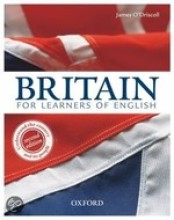Monarchy - Strength of renaissance kingship under Francis I (change)
33 important questions on Monarchy - Strength of renaissance kingship under Francis I (change)
How did Francis I show his control over religious policy regarding Nicholas Cop?
He ordered the Bishop of Paris to stop the persecution against Cop.
What and when was the Affair of the Placards and what did they attack?
October 1534 - They were sacramentarian denunciation of the Eucharist - they were violently offensive to the Catholic Mass and stated that priests were antichrists and that transubstantiation was the doctrine of the devils.
What did the Affair of the Placards do to Francis's view on heresy?
They did not necessarily harden his views as he had never tolerated such doctrine but it did move him to act against radicals and clarified the devision between reform and heresy.
- Higher grades + faster learning
- Never study anything twice
- 100% sure, 100% understanding
What was Protestantism seen as after the Affair fo the Placards 1534?
The religion of the rebels and a threat to national order
What meant that Protestants and evangelicals could not make a big impact on France?
They were a minority
When was the Truce of Nice and what was it?
1538 - it freed Francis from the need to court German princes + he recognised that greater powers over heresy were needed in Parlements in order to isolate Protestants.
When was the Edict of Fontainebleau and what was it?
1540 - gave the parlement overall control of heresy jurisdiction = shows that Protestantism was making headway in France.
In terms of domestic polices, what shows that Francis was a strong monarch?
-his ability to centralise government and lay the foundations for absolutism
-ability to collect taxation
-maintain law
- no Estates Generals = only in 1527 did he call an Assembly of Notables which compromised leading clerics, nobles and parlementaries - this acted as an extension of the King's council and to a great extent was controlled by the King himself.
In 1542 how was the King's absence of fighting Charles V taken advantage of? How did Francis stop this?
Over 10,000 men forced the royal commissioners out of the localities. The revolt was stopped by the King's personal intervention (aspect of strong monarchy) in La Rouchelle to pass judgement on the rebels.
How was Francis I's relationship with the nobility?
Few noble revolts (although most of them were fighting in the italian wars). The old nobility remained loyal to the crown and helped to implement royal policy on the localities. EXCEPTION = Charles of Bourbon = even in periods of strong monarchy the nobility remained a potential threat.
What happened in the Bourbon Rebellion (1523)?
- Francis laid claim on Bourbon's land
- COB looked abroad for support = alliance with Charles V and Henry VIII
- Bourbon defeated (the most powerful nobleman in France)
What opposition occurred regarding the Ordinance of Villers-Cotterets (1539)?
The parlement of Rouen refused to ratify it so Francis closed it doen until 1541 when he was satisfied with the loyalty of its members. The Ordinance was passed in 1540.
What was Francis I's main aim?
Advance his own authority - any other developments were a by-product of his central aim. Promoting nationhood was not his primary intention.
What developments had Francis made to forging a nation state? *think Burgundy...*
He had promoted nation state, but France was still some way off territorial, legal and linguistic unity. ALTHOUGH in 1526, Burgundy pledged their loyalty to the French crown in the wake of Francis I's capture in Pavia = Francis had created a sense of belonging.
How was government becoming increasingly centralised?
Through the use of provincial governors, baillis and maitres des requetes = royal control over provinces was increasing.
What were the limitations of royal authority?
- The parlements still had to ratify legislation
- Provincial estates had to grant subsidies
- Tax collection was granted by provincial estates
- The King could not erode local traditions and priviledges
What similarities can be seen between Louis XII and Francis I?
- Renaissance monarchs who were interested in good government (Francis was more extravagant in terms of patronage, court life and expenditure)
- The rationale for war remained the same (though the scale and expense of war increased under FI)
- Both looked to u=increase royal revenue + make government more efficient
- Both benefited from a period of long, stable rule and economic prosperity
- Neither faced much noble faction
What difference can be said about Louis XII and Francis I?
Louis was more willing to rule with the advice of the parlements.
What is important to note regarding the growth of religious content during Francis I's reign?
For the first time we see devisions = Catholic unity was under threat.
What came at the expense of extending royal authority?
Representative institutions and the power of the nobility.
Why was 1562 a turning point in regards to monarchical authority?
FWOR - local privilege and parochialism took hold.
What evidence suggests attempts to enhance royal authority under FI and LXII?
New parlements in Provence & Rouen (LXII & FI)
Introduction of royal offers in the provinces e.g. gens de finances (LXII)
What evidence shows FI and HII forcing representative institutions into obedience?
1538 - FI ignores the grievances of local estates in Albi and collects his subsidy
HII - collects the taillon from estates in Normandy whilst billeting troops there
What 2 factors did the authority of the monarch depend on?
His personal character & longevity of his rule
What does the coronation image symbolise? What title was given to the King of France?
It emphasised the unique relationship between the French monarchy and the Catholic Church. The French King had the papal endorsement of 'rex christianissimus' meaning the Most Christian King.
What does the Ordinance of Blois (1499) and Ordinance of Lyons (1510) say about his Louis XII?
He had a willingness to reform and in particular to define clearly the powers of regional officials and make them accountable to the crown.
What year does Louis XII appoint 8 gens de finances?
1504
When and what did Claude de Seyssel write? What does it show?
A political treatise called The Monarchy of France (1515) - even Seyssell shows that monarchs were strong but not absolute as they had to answer to localities
Who was present at the Assembly of Notables in 1527? What does this show?
Nobles - FI has to re-establish his authority over the nobles after he was captured at Pavia = shows how important it is to have more power than the nobles.
Why were the Barme and Baillet important?
The started to codify the legal system under LXII
How did Francis regard Humanism?
An enlightened means of improving Catholicism - context very different from the growth of Calvinism.
What aspects of FI's reign saw continuity from LXII's reign and what saw change?
Continuity:
- strong personal kingship
- fights in Italy
- bureaucracy and administration
- nation state = provinces becoming part of France
Change:
- beginning of religious disunity - he unwittingly encourages radical ideas = by his death Calvinism is already making headway
- eroding provincialism
What statistics show that FI made greater headway towards centralisation than LXII? How does this compare with HII?
Centralisation had only marginally increased under LXII as only 8 royal officials were implemented under his gens de finances whereas FI made great headway with one royal official every 45km by 1547 whereas there had only been 1 every 60km in 1515. Yet HII made greater headway, making a 25% increase on his FI's tax - although arguably this would not have been possible without FI's initial progress.
The question on the page originate from the summary of the following study material:
- A unique study and practice tool
- Never study anything twice again
- Get the grades you hope for
- 100% sure, 100% understanding
































